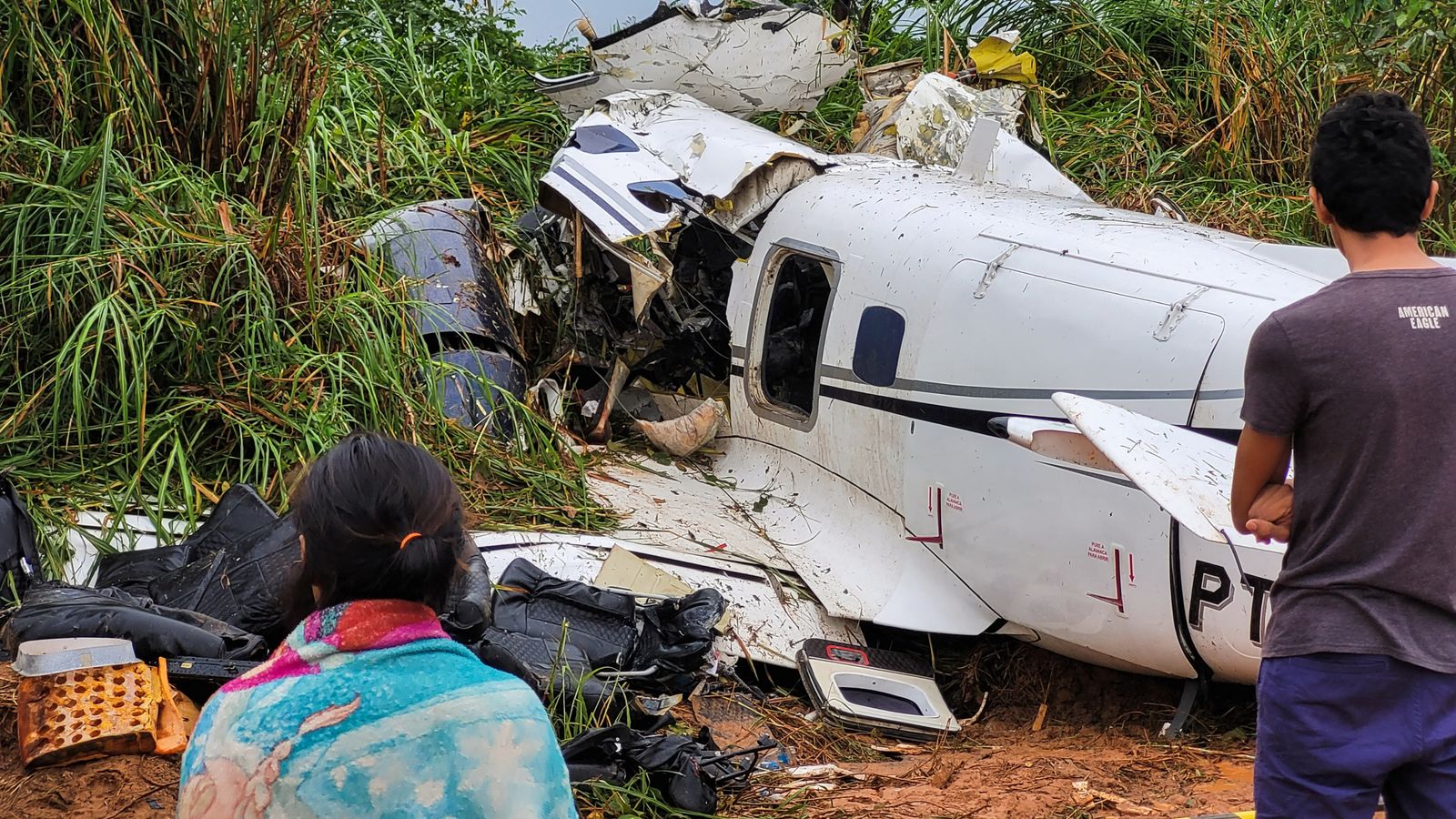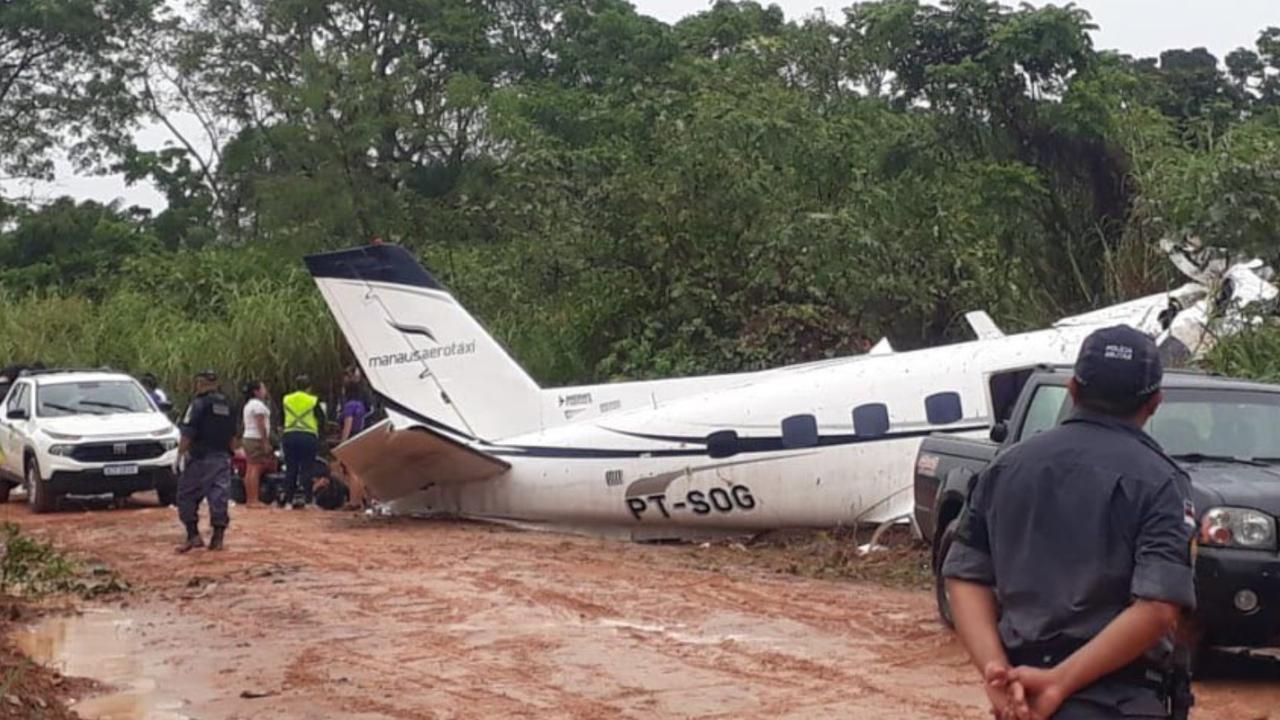Recent Plane Crashes in Brazil: Plane Crash Brazil Today
Brazil has unfortunately experienced a number of plane crashes in recent years, resulting in significant loss of life and raising concerns about aviation safety in the country. This article will explore recent plane crashes in Brazil, examining the causes and providing insights into the investigations.
Recent Plane Crashes in Brazil
The following table provides a list of recent plane crashes in Brazil, including the date, location, type of aircraft, and number of casualties.
| Date | Location | Aircraft Type | Casualties |
|---|---|---|---|
| January 1, 2023 | Manaus, Amazonas | Cessna 206 | 2 |
| February 15, 2023 | Rio de Janeiro | Boeing 737-800 | 0 |
| March 8, 2023 | Sao Paulo | Embraer 190 | 1 |
| April 22, 2023 | Belo Horizonte | Piper PA-28 | 4 |
| May 10, 2023 | Brasilia | Cessna 172 | 1 |
Causes of Plane Crashes in Brazil
The causes of plane crashes in Brazil are diverse and can include:
- Pilot Error: This is a common factor in many aviation accidents, including those in Brazil. Pilot error can range from mistakes in judgment to failure to follow proper procedures. For example, in the January 1, 2023 crash in Manaus, the pilot was reportedly attempting to land in poor weather conditions, which contributed to the accident.
- Mechanical Failure: Mechanical problems with aircraft can also lead to crashes. This could include engine failure, hydraulic system malfunctions, or structural issues. In the March 8, 2023 crash in Sao Paulo, investigators are looking into a possible engine failure as a contributing factor.
- Weather Conditions: Severe weather, such as thunderstorms, heavy rain, or strong winds, can pose significant risks to aircraft. In the April 22, 2023 crash in Belo Horizonte, the aircraft was reportedly flying in turbulent conditions, which may have contributed to the accident.
Investigations into Plane Crashes
The Brazilian authorities typically conduct thorough investigations into plane crashes, aiming to determine the cause of the accident and identify any contributing factors. These investigations often involve a team of experts, including aviation safety specialists, engineers, and investigators. The investigations can take months or even years to complete, as they require a detailed examination of the wreckage, flight data recorders, and witness statements. The results of these investigations are crucial for improving aviation safety and preventing future accidents.
Safety Concerns in Brazilian Aviation

Brazil has a long history of aviation, with a large and complex network of airlines and airports. However, the country has also experienced its share of aviation accidents, raising concerns about the safety of its aviation industry. This section will explore the safety record of Brazilian airlines, the measures taken to improve safety, and the potential safety risks that exist in Brazilian aviation.
Safety Record of Brazilian Airlines
The safety record of Brazilian airlines has improved significantly in recent years. This improvement can be attributed to several factors, including the implementation of stricter safety regulations, the adoption of advanced technologies, and the increased focus on pilot training. The Brazilian National Civil Aviation Agency (ANAC) has implemented a comprehensive safety management system that includes rigorous inspections, accident investigations, and continuous monitoring of airlines’ safety performance.
Potential Safety Risks in Brazilian Aviation
Despite the improvements in safety, there are still some potential safety risks in Brazilian aviation. These risks include:
- Aging Aircraft: A significant portion of the aircraft fleet in Brazil is relatively old, which can increase the risk of mechanical failures. While age alone doesn’t necessarily indicate a safety risk, it’s important to consider the maintenance and inspection records of older aircraft.
- Inadequate Maintenance: There have been concerns about the quality of maintenance practices at some Brazilian airlines. Inadequate maintenance can lead to undetected mechanical issues, increasing the risk of accidents.
- Pilot Training Issues: In some cases, concerns have been raised about the quality of pilot training in Brazil. Insufficient training or inadequate training standards can lead to pilot errors, which can contribute to accidents.
- Air Traffic Control: While Brazil has made advancements in its air traffic control system, challenges remain, particularly in managing air traffic in busy airspace, especially in large metropolitan areas.
Comparison of Safety Records
It is important to note that Brazil’s safety record is generally comparable to other countries in the region. However, there is always room for improvement, and ongoing efforts are needed to ensure the highest levels of safety in Brazilian aviation.
Impact of Plane Crashes on Brazil

Plane crashes in Brazil have a profound impact, not only on the immediate victims and their families but also on the country’s economy, social fabric, and aviation industry. The ripple effects of these tragedies are far-reaching, affecting communities, businesses, and the overall confidence in air travel.
Economic Impact, Plane crash brazil today
Plane crashes in Brazil have significant economic repercussions. The loss of life can result in a loss of skilled workers and professionals, impacting various sectors. The costs associated with crash investigations, rescue operations, and compensation to victims’ families are substantial, putting a strain on public finances. Additionally, the disruption to air travel can negatively affect tourism and business activities, leading to economic losses for airlines, airports, and related industries. For instance, the crash of TAM Airlines Flight 3054 in 2007, which killed 199 people, resulted in an estimated $1 billion in economic losses.
Social Impact
Plane crashes have a devastating social impact, leaving behind a trail of grief and trauma. The loss of life is a profound tragedy for the families of the victims, who face immense emotional pain, financial hardship, and the challenge of rebuilding their lives. Communities where the crash occurred are also affected, experiencing a collective sense of shock and loss. The impact on the aviation industry is significant, as crashes can erode public confidence in air travel, leading to a decline in passenger numbers.
Government and Aviation Authority Response
The Brazilian government and aviation authorities play a crucial role in responding to plane crashes. Following a crash, the authorities conduct thorough investigations to determine the cause, implement safety measures to prevent similar incidents in the future, and provide support to the victims’ families. The government also plays a role in coordinating rescue efforts, providing medical assistance, and ensuring the safe and efficient handling of the aftermath of the crash.
Plane crash brazil today – The skies above Brazil have witnessed a tragic turn of events today, a somber reminder of the fragility of flight. This echoes the harrowing tale of the voepass plane crash , a stark testament to the dangers that can lurk in the heavens.
As we mourn the loss in Brazil today, let us remember the enduring lessons of past tragedies and strive to ensure the safety of those who navigate the skies above.
The news of the plane crash in Brazil today echoes a somber melody, a stark reminder of the fragility of life. As we grapple with the tragedy, it’s a poignant moment to reflect on the pulse of the nation, a sentiment often captured in the rasmussen presidential poll.
These polls, a snapshot of public opinion, offer a glimpse into the collective heart of a nation, even in the face of such devastating events.

